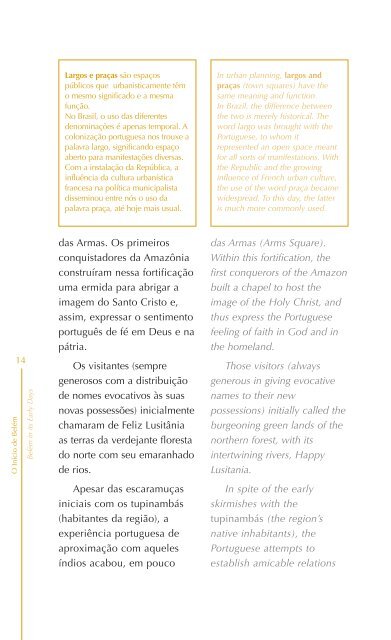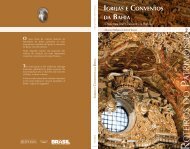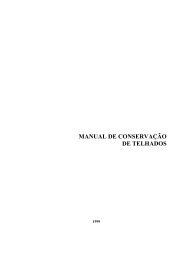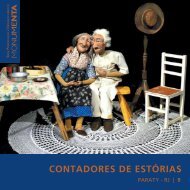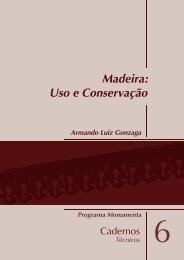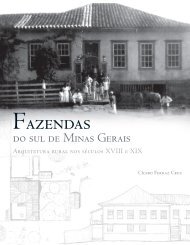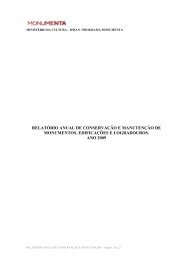LARGOS, CORETOS E PRAÇAS DE BELÉM - Monumenta
LARGOS, CORETOS E PRAÇAS DE BELÉM - Monumenta
LARGOS, CORETOS E PRAÇAS DE BELÉM - Monumenta
Create successful ePaper yourself
Turn your PDF publications into a flip-book with our unique Google optimized e-Paper software.
O Início de Belém<br />
14<br />
Belém in its Early Days<br />
Largos e praças são espaços<br />
públicos que urbanisticamente têm<br />
o mesmo significado e a mesma<br />
função.<br />
No Brasil, o uso das diferentes<br />
denominações é apenas temporal. A<br />
colonização portuguesa nos trouxe a<br />
palavra largo, significando espaço<br />
aberto para manifestações diversas.<br />
Com a instalação da República, a<br />
influência da cultura urbanística<br />
francesa na política municipalista<br />
disseminou entre nós o uso da<br />
palavra praça, até hoje mais usual.<br />
das Armas. Os primeiros<br />
conquistadores da Amazônia<br />
construíram nessa fortificação<br />
uma ermida para abrigar a<br />
imagem do Santo Cristo e,<br />
assim, expressar o sentimento<br />
português de fé em Deus e na<br />
pátria.<br />
Os visitantes (sempre<br />
generosos com a distribuição<br />
de nomes evocativos às suas<br />
novas possessões) inicialmente<br />
chamaram de Feliz Lusitânia<br />
as terras da verdejante floresta<br />
do norte com seu emaranhado<br />
de rios.<br />
Apesar das escaramuças<br />
iniciais com os tupinambás<br />
(habitantes da região), a<br />
experiência portuguesa de<br />
aproximação com aqueles<br />
índios acabou, em pouco<br />
In urban planning, largos and<br />
praças (town squares) have the<br />
same meaning and function.<br />
In Brazil, the difference between<br />
the two is merely historical. The<br />
word largo was brought with the<br />
Portuguese, to whom it<br />
represented an open space meant<br />
for all sorts of manifestations. With<br />
the Republic and the growing<br />
influence of French urban culture,<br />
the use of the word praça became<br />
widespread. To this day, the latter<br />
is much more commonly used.<br />
das Armas (Arms Square).<br />
Within this fortification, the<br />
first conquerors of the Amazon<br />
built a chapel to host the<br />
image of the Holy Christ, and<br />
thus express the Portuguese<br />
feeling of faith in God and in<br />
the homeland.<br />
Those visitors (always<br />
generous in giving evocative<br />
names to their new<br />
possessions) initially called the<br />
burgeoning green lands of the<br />
northern forest, with its<br />
intertwining rivers, Happy<br />
Lusitania.<br />
In spite of the early<br />
skirmishes with the<br />
tupinambás (the region’s<br />
native inhabitants), the<br />
Portuguese attempts to<br />
establish amicable relations


